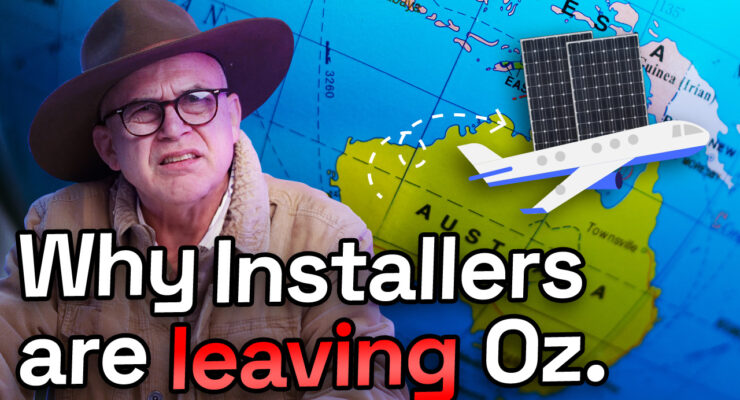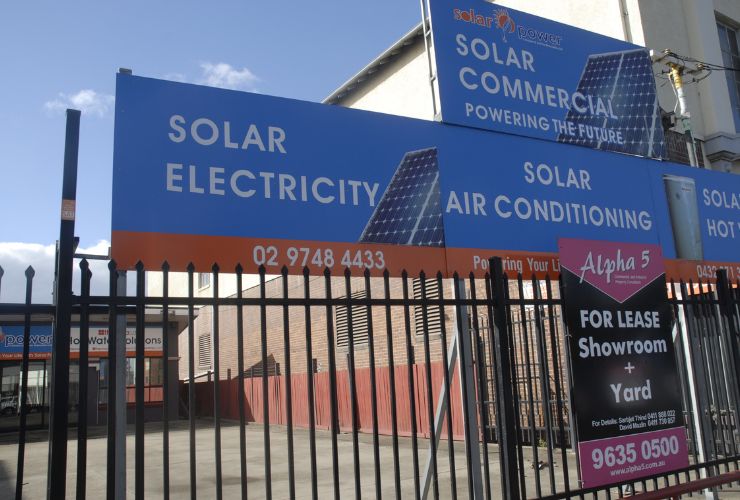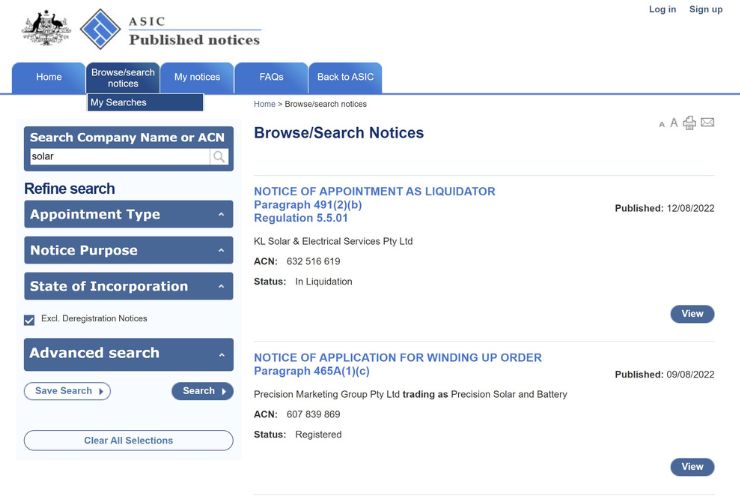
Fast read
Solar companies going out of business in the Australian industry can result in abandoned or orphaned solar, where homeowners are left with void warranties and malfunctioning systems.
This is often caused by low-quality products unsuitable for the Australian climate and the legal responsibility of installation companies for warranties. Phoenixing, or the creation of new companies, further exacerbates the issue.
To avoid these problems, it is crucial to choose a local and reliable installer rather than a marketing company offering low prices but lacking long-term support.
Why do solar companies leave the Australian industry?
Currently, solar businesses are flourishing. The situation with solar system installations has changed a lot in the past 15 years. Back then, installers had to work hard to get jobs, but now it’s different. Today, solar is becoming much more cost-effective and well-received among homeowners and businesses, thanks to dramatic price drops over the last decade and improved manufacturing processes. However, there are still a number of solar companies going out of business in Australia.
Let’s look at why.
Over 750 solar businesses have liquidated their business or gone bankrupt
So why have over 750 solar companies shut their doors, liquidated or bankrupt in the middle of a decade-long solar boom? Consequently, there are many installed solar PV systems where the installation company is no longer present to provide any after-sales services.
When solar companies go out of business, it results in “Abandoned” PV systems also known as orphaned solar. Between 600,000 and 700,000 orphaned solar systems are used on roofs in Australia, meaning all the warranties for those installations are null and void.
This is mainly because the product, panels or inverters, was not right for Australian conditions. We have one of the hottest climates, and both cheap panels and unsuitable inverter models had issues coping.
For example, string inverters poorly installed on Northern or Western walls get extremely hot in summer, and sometimes the product isn’t up to scratch for our dusty and hot environments.
Increased warranty claims can be the reason to leave
After a few years, such cheap-priced solar products create warranty claims. Then the solar installation business is busy with warranty visits and realises – we’re not making any money. So it’s cheaper for them to disappear and have the warranties lapse.
These companies initially draw customers in with their low prices and claim they are one of the biggest and largest solar retailers. Often businesses will advertise all their highlights and pros, leaving out their inefficient business practices and poor leadership skills. In those cases of defective systems, the solar system is often installed poorly, which can be why the system is not working correctly. Instead of making money for you, it just sits up there and does not produce much output.
Sometimes, many customers pull it off the roof if it is one of the old 1.5 kW to 3 kW solar power systems from 10 or so years ago.
So the lesson is, do not buy cheap from a solar marketing company because there is a high risk that that particular installer cannot make a decent profit in the long run with their business model and will become an orphaned solar company. Instead, consider purchasing from a trustworthy local installer.

The Australian Consumer law is challenging solar.
Another reason these solar companies have left the industry or Phoenix is the Australian consumer law. This is because Australian consumer laws say that if you sell a manufacturer’s product, let’s make it a panel. So the manufacturer has disappeared, and then the warranty responsibility goes onto the company that sold and installed the solar panels.
What then happens is that that 15 or 25-year panel product warranty has now just become the responsibility of the solar installation company. Maybe the manufacturer has left Australia. This could be from a realisation that their panels become faulty after 7 to 8 years.
Let’s say that a solar company installed 500 solar systems with these particular panels over the past three years. Then there are potentially 2 million dollars worth of warranty claims coming their way.
With that reality in front of them, many solar installation business owners will decide to pull the pin on the old company. This leaves the warranties in no man’s land. They then start again with a new name and new ABN.
You can look for solar and renewable energy companies that have left the industry:

Just enter terms like solar, energy, or renewable on the website as per the above link. You will see the latest casualties of this reality.
Unfortunately, cheaper panels fail much more. As a result, most affordable solar systems that died also had lower-quality installations overall.
How does this affect you?
Another solar company comes to fix your old, broken system. They discovered that the panels stopped working because of water damage.
Unfortunately, the inverter cannot be repaired. In addition, the installation quality generally does not meet the most current installation standards. That’s when the new solar installer recommends removing the old solar system and starting again.
Panels come with an extended product warranty. However, when customers submit their warranty claim, they are often shocked by the verdict. Now they have to start all over again. This is because their previous cheap solar system had so many issues, and both the manufacturer and original installer had disappeared.
The client could have avoided the high cost if they had chosen a reliable solar supplier from the start.
So my strong advice is to buy from something other than a cheap, large, Australia-wide, and promotional-focused solar company. Do not believe the claims of famous spokespersons who are not solar experts because often the outcome means that after a few years, you are chasing people down to have your solar repaired or replaced.
What should you be doing to avoid this
As with any good return on investment, research is crucial to reach a quality result. When doing internet research, it’s important to check the background of the installation company. Make sure they have been in business for at least ten years and have a good reputation.
The second step is to check out the reviews. Google reviews are more complicated to fake than other types. So, look at what other customers say about this installation company and how many reviews they have.
The CEC approves solar panel companies that follow industry rules and promise to act responsibly in their operations and marketing.
The CEC charges a fair fee for membership, but some bad installation companies managed to join the program. For this reason, I would not put too much value on such a membership.
There is one final step to ensure you have a decade-long piece of mind, other than choosing a local installation company that has been around for a long time. This is to pick panels and inverters from brands with a strong Australian presence. Ask the questions – how long have these companies been in Australia, and how many staff do they employ?
Consider undertaking some web research yourself. Do they, for example, have a dedicated warranty claim email or phone number?
When solar companies go out of business, customers become stuck with an orphaned solar system provider in a horrible position. However, there are ways in which your risk can be minimised.